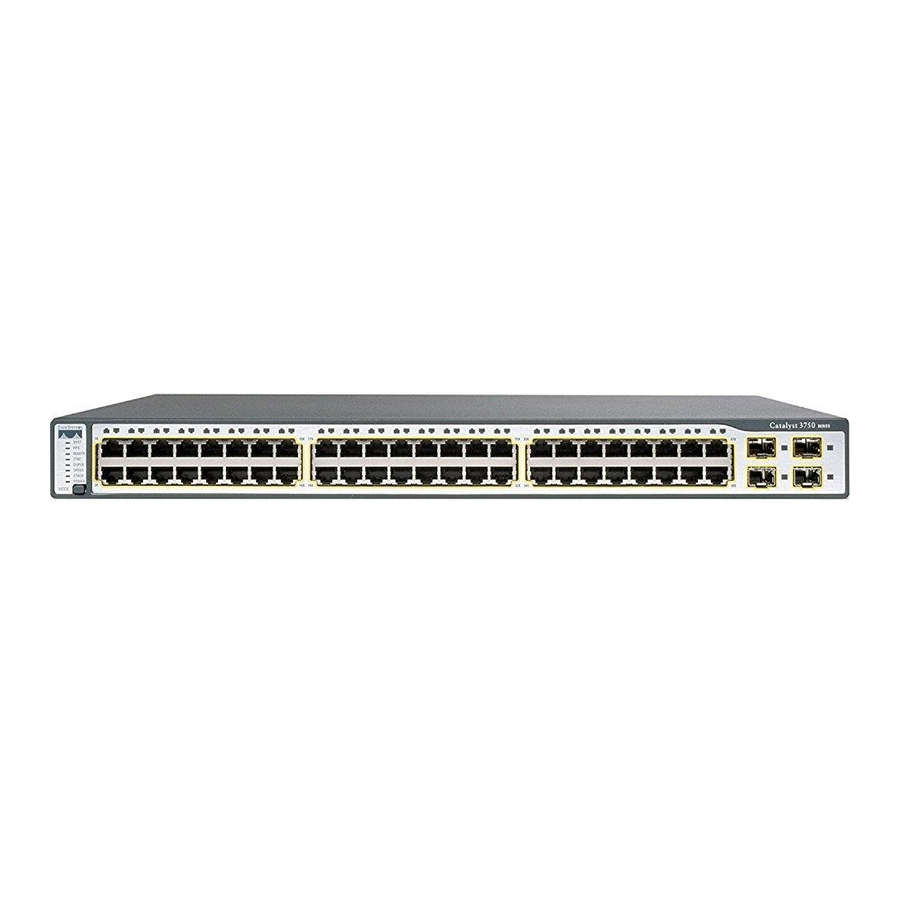All contents are Copyright © 1992–2006, 2008 Cisco Systems, Inc. All rights reserved. This document is Cisco Public Information.
Feature
Benefit
Manageability
● Cisco IOS Software CLI support provides common user interface and command set with all Cisco
Superior
Manageability
routers and Cisco Catalyst desktop switches.
● Switching Database Manager templates for access, routing, and VLAN deployment allow the
administrator to easily maximize memory allocation to the desired features based on deployment-
specific requirements.
● VLAN trunks can be created from any port, using either standards-based 802.1Q tagging or the Cisco
Inter-Switch Link (ISL) VLAN architecture.
● Up to 1005 VLANs per switch or stack and up to 128 spanning-tree instances per switch are
supported.
● 4000 VLAN IDs are supported.
● Voice VLAN simplifies telephony installations by keeping voice traffic on a separate VLAN for easier
administration and troubleshooting.
● Cisco VLAN Trunking Protocol (VTP) supports dynamic VLANs and dynamic trunk configuration
across all switches.
● Cisco Group Management Protocol server functions allow a switch to serve as the
Cisco Group Management Protocol router for client switches. The IP Services image is required.
● IGMP snooping provides fast client joins and leaves of multicast streams and limits bandwidth-
intensive video traffic to only the requestors.
● Remote Switch Port Analyzer (RSPAN) allows administrators to remotely monitor ports in a Layer 2
switch network from any other switch in the same network.
● For enhanced traffic management, monitoring, and analysis, the Embedded Remote Monitoring
(RMON) software agent supports 4 RMON groups (history, statistics, alarms, and events).
● Layer 2 traceroute eases troubleshooting by identifying the physical path that a packet takes from
source to destination.
● All 9 RMON groups are supported through a SPAN port, which permits traffic monitoring of a single
port, a group of ports, or the entire stack from a single network analyzer or RMON probe.
● Domain Name System (DNS) provides IP-address resolution with user-defined
device names.
● Trivial File Transfer Protocol (TFTP) reduces the cost of administering software upgrades by
downloading from a centralized location.
● Network Timing Protocol (NTP) provides an accurate and consistent timestamp to all intranet
switches.
● Multifunction LEDs per port for port status; half-duplex and full-duplex mode; and 10BASE-T,
100BASE-TX, and 1000BASE-T indication as well as switch-level status LEDs for system, redundant-
power supply, and bandwidth utilization provide a comprehensive and convenient visual management
system.
● SPAN works across all the ports in a stack.
Data Sheet
Page 9 of 23

